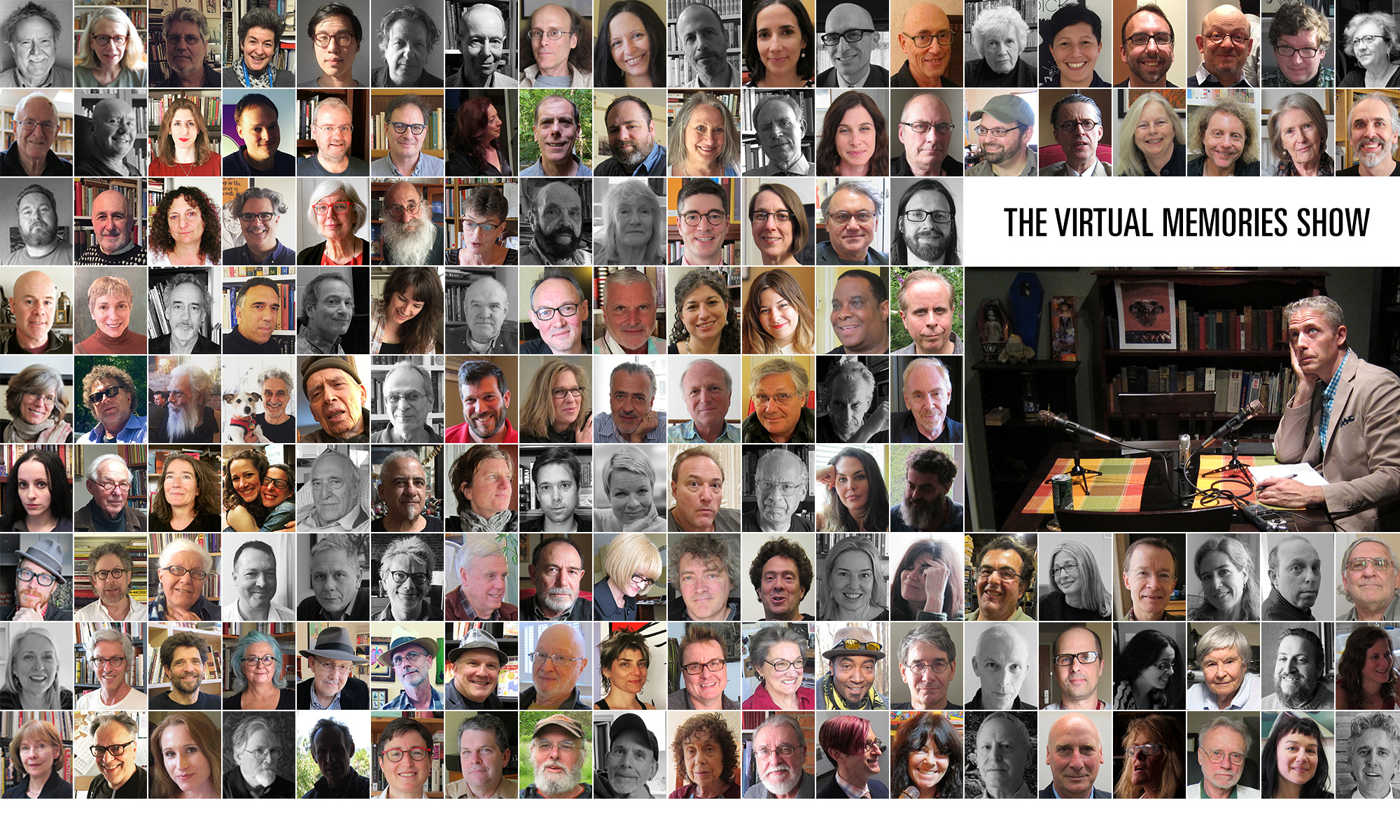Virtual Memories Show:
Mimi Gross – Sincere Observation
Podcast: Play in new window | Download
Subscribe: Spotify | TuneIn | | More
“My weakness is that I don’t have a set of parameters. My work always looks like a group show. But the connections are real. Anyone who looks can see the connections.”

Artist Mimi Gross joins the show to talk about her art, her life, and the joys of collaboration. Mimi’s been part of the New York art scene for more than half a century, and her paintings, sculptures, sets and designs have been seen around the world. We talk about how she stood out as Mimi Gross when she was “daughter of sculptor/artist Chaim Gross” and “wife of artist Red Grooms”. We also get into the difficulties of having a family while being a working artist, making art in response to 9/11, designing sets and costumes for dance and how that fed back into her other art-forms, the multi-year process of building Ruckus Manhattan, the problems and perks of not fitting into a particular tradition, the experience of building the Renee and Chaim Gross Foundation, and the loose definition of success. I also ask my half-assed “Jeff Koons: Fraud or Prank?” question again, but I really get shown up for my lack of knowledge of contemporary art. Give it a listen!
“It wasn’t until I was well over 40 that I realized that not everyone has imagination.”
Podcast: Play in new window | Download
Subscribe: Spotify | TuneIn | | More

Enjoy the conversation! Then check out the archives for more great episodes! You might like:
Follow The Virtual Memories Show on iTunes, Twitter, Facebook, Tumblr, and RSS!
About our Guest
Mimi Gross is a painter, set-and-costume designer for dance, and maker of interior and exterior installations. She has had several international exhibitions, including work at the Salander O’ Reilly Galleries, and the Ruth Siegel Gallery, New York City, the Inax Gallery, in Ginza, Tokyo, and Galerie Lara Vincey, in Paris. She has also shown work at the Municipal Art Society and at the Port Authority Bus Terminal in New York. Her anatomically-themed artwork is on permanent display, courtesy the New York City Parks Department, at the Robert Venable Park in East New York.
Her work is included in numerous public collections, including those of the Metropolitan Museum of Art, the Art Institute of Chicago, the Hirschhorn Museum and Sculpture Garden, the Museum of Contemporary Art in Los Angeles, The Brooklyn Museum, the Jewish Museum, le Musee des Art Decoratifs in Paris, the Nagoya Museum of Art, the Onasch Collection in Berlin and the Lannon Foundation, as well as the Fukuoko Bank in Japan and New York’s Bellevue Hospital.
Gross has been the recipient of countless awards and grants including from the New York State Council on the Arts, twice from the National Endowment for Visual Arts, the American Academy & Institute of Arts and Letters, and a “Bessie” for sets and costumes. She held the McMillan/Stewart Endowed Chair in Painting at the Maryland College of Art in 2010-2011, and has taught at the Art Institute of Chicago, the Rhode Island School of Design, the Penland School of Crafts, Syracuse University, SUNY Purchase, as well as other universities and educational institutions, giving workshops and advising students, as a visiting artist.
From 1960-1976, Gross collaborated with Red Grooms on many large, multidimensional installations, including the fabled Ruckus Manhattan. Since 1979, she has collaborated in a fruitful (and on-going) partnership with the dancer, Douglas Dunn and his company, designing sets and costumes for his performances. She also collaborated with the poet Charles Bernstein. Her on-site drawings of the World Trade Center from 9/11 and after are included in the volume, Some of These Daze, published by Granary Books.
Credits: This episode’s music is Shoulda Been a Painter by Karl Hyde. The conversation was recorded on a pair of Blue enCORE 200 microphones feeding into a Zoom H5
feeding into a Zoom H5 digital recorder. I recorded the intro and outro on a Blue Yeti USB Microphone
digital recorder. I recorded the intro and outro on a Blue Yeti USB Microphone . Processing was done in Audacity and Logic Pro. Lower photo of Ms. Gross by me, no credit given for upper photo (studio shot).
. Processing was done in Audacity and Logic Pro. Lower photo of Ms. Gross by me, no credit given for upper photo (studio shot).
 Fantagraphics is celebrating its 40th anniversary and holy crap have I interviewed a ton of their cartoonists and writers:
Fantagraphics is celebrating its 40th anniversary and holy crap have I interviewed a ton of their cartoonists and writers:

























